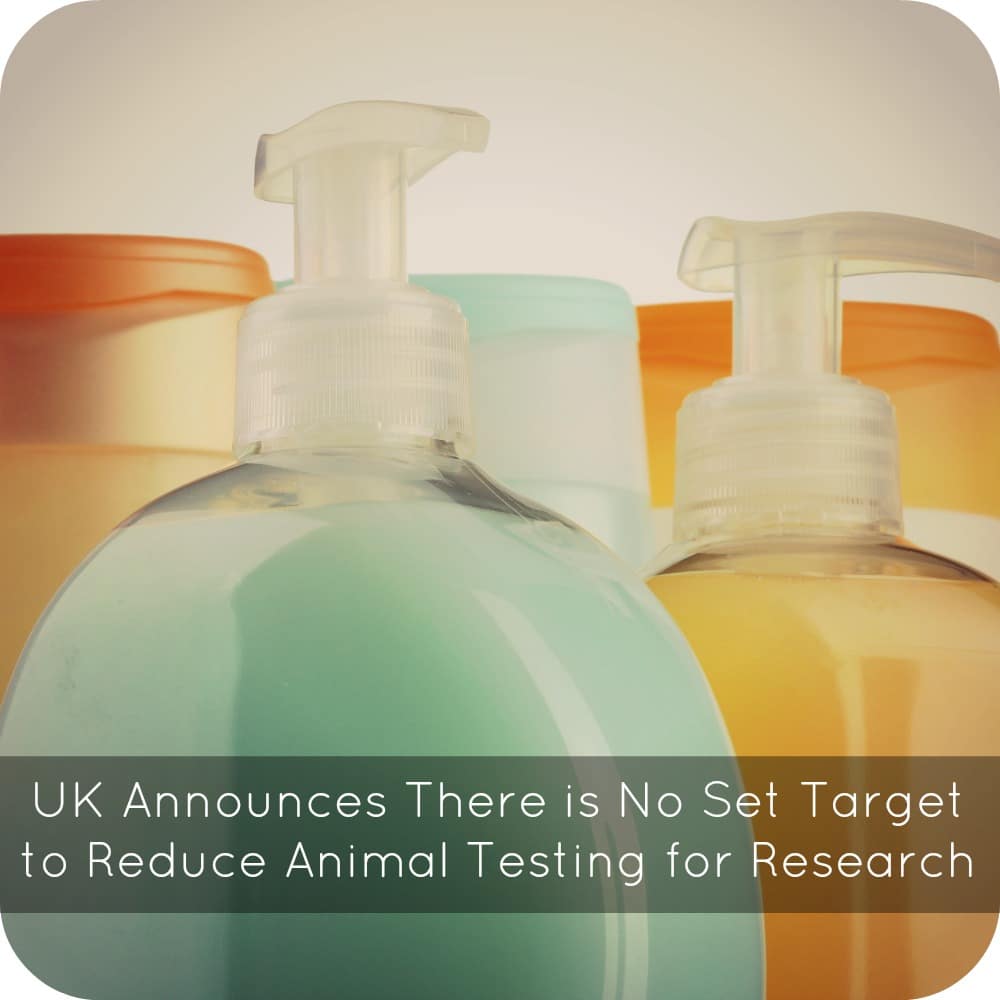UK Announces There is No Set Target to Reduce Animal Testing for Research
Last year the EU announced a ban on animal testing for cosmetics ingredients. It was a giant step for cruelty free movements worldwide. This ban meant that items sold in the EU could not be tested on animals in the EU and that ingredients could also not be tested in the EU (find out more about what it means for brands selling where animal testing is required by law). However, it did not cover animal testing used for research or animal testing used for ingredients in household items.
Earlier this week an announcement was made about the future of animal testing for research. Animal rights groups worldwide have a mixed response to the message sent by the government.
The government states that animal testing will still be necessary in some areas – life sciences (illness and disease), animal welfare (minimization of pain, suffering and distress for animals living on farms, zoos, and in labs), and environmental (to understand the potential effect of chemicals on our environment).
“The Government is clear that there is a continuing need for properly regulated and ethically conducted research using animals where the harm caused to the animals is justified by the potential benefits, and where no practicable alternative exists. We will continue to make this case and to improve understanding and awareness of this issue.“
The report states that this testing will still be conducted on fish, rodents, dogs (mainly beagles), primates, horses, and cats. The report also notes that some primates may be replaced with genetically modified rodents and fish, of which there has been an increase.
The report recognizes the benefits of in vitro methods (non animal testing methods) and that they are more cost effective. They are seeing an increase in research using both in vivo (animal testing) and in vitro methods instead of just animal testing alone. Recent scientific advances for in vitro testing methods are thought to only help decrease the number of animal tests done for research. Yet, the government states more advancements in technologies need to be made in order to further reduce animal testing.
The UK plays a leading role globally in supporting the development and adoption of techniques to replace, reduce and refine the use of animals. For example, the Government has been providing funding to the NC3Rs since it was established in 2005 and the level of that funding has significantly increased since 2010 based upon their record of success. The Government’s research funding bodies (e.g. the Medical Research Council) have funded major initiatives, often in partnership with charities such as the Wellcome Trust, to ensure the UK gives leadership in data sharing to avoid duplication occurring and to help improve understanding, for example about the pathways and causes of disease. Furthermore, a number of government departments and agencies have, in recent years, worked collaboratively to develop and validate new technologies which can replace animal use in safety testing and help reduce risks to the public, the environment, pets and farm animals.
They also want to promote awareness about animal testing that is to be done in areas where no alternatives may exist. Labs are encouraged to document the amount of discomfort they believe animals to be in during testing. This data is planned to be used to further refine these practices, though it’s unclear exactly what that would mean in regards to a potential reduction of animal testing.
Plans are set in place to allow the reduction of animal testing and to promote alternatives and provide support for research done through in vitro methods. This report acknowledges the value in vitro tests have and that more time and money should be spent to enhance the technology for in vitro tests. This being publicly and openly acknowledged by a government is a step in the right direction.
Outside sources say that animal testing for research has actually been increasing in recent years.
The most recent data available show that in 2012, researchers conducted more than 4.11 million experiments on animals—well over 11,000 procedures a day and a rise of 8% over 2011, according to Home Office figures. The rapid growth is caused primarily by the massive use of genetically modified animals. – UK Science Insider http://news.sciencemag.org/europe/2014/02/u.k.-scientists-welcome-new-policy-animal-research
More information about the use of genetically modified animals for research can be found on the BBC website – Sharp rise of 8% in UK animal experiments.
The full policy, Working to reduce the use of animals in research: delivery plan, can be read online in PDF format. If you are reading this post, I urge you to read the full document to get a better understanding of what is being presented, what testing is being done currently, and what it may mean for future animal testing.
It’s laid out in this document what testing is being conducted and the reasons for it. This level of transparency is greatly appreciated by many animal rights groups who say that the transparency alone is worth supporting. What it could mean as far as a reduction in animal testing, and a date in which some reduction may happen, remains unclear.
